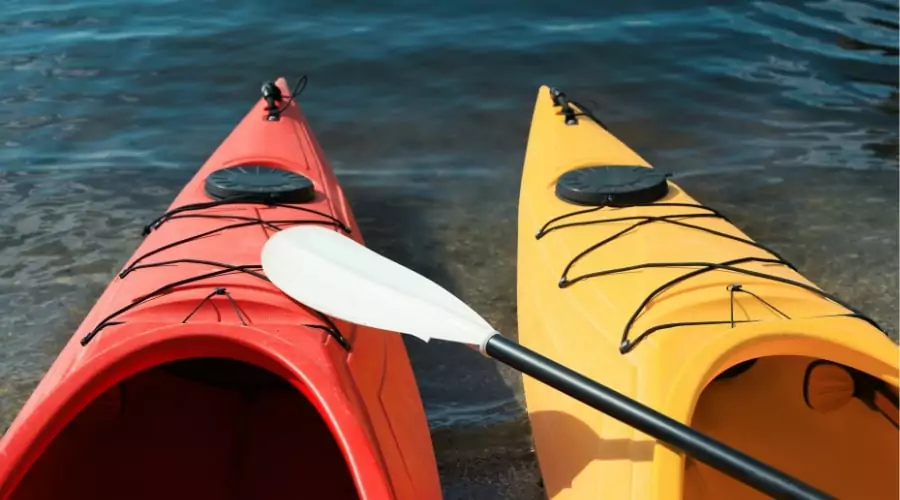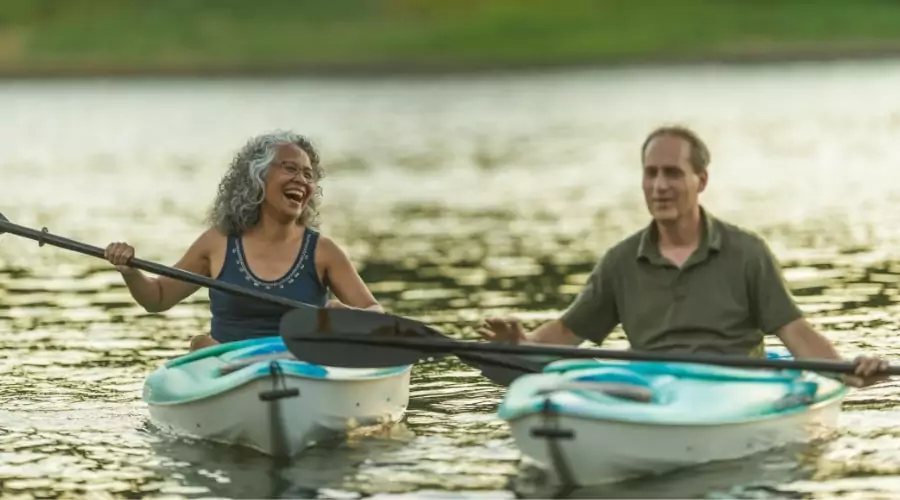Kayaking is an enjoyable activity that allows you to explore rivers and other water bodies at your own pace. Anchoring your kayak in a river can be a bit tricky, especially if you’re new to the sport.
Whether you’re stopping for a break, fishing, or simply enjoying the scenery, knowing how to anchor your kayak properly can make your experience much more comfortable and safe.
In this guide, we’ll go over some essential tips on how to anchor a kayak in a river, so you can enjoy your time on the water without any worries.

Types of Anchors for Kayaks
Anchoring a kayak in a river requires the right kind of anchor. Here are three common anchor types suitable for kayaks:
Grapnel Anchor
A grapnel anchor is a small, foldable anchor with multiple flukes. This anchor is suitable for rivers with rocky or uneven bottoms. The flukes can grip the rocks, providing a secure hold.
Mushroom Anchor
Mushroom anchors are shaped like mushroom caps and provide excellent holding power in soft riverbeds, such as mud or sand. They’re not as effective in rocky environments.
Stake Out Pole
A stake-out pole is a long, rigid pole with a sharp end that you can push into the riverbed. It’s ideal for shallow rivers with soft bottoms like sand or mud. It’s not suitable for rocky or deep rivers.
Selecting the Right Anchor for River Kayaking
To select the right anchor for river kayaking, consider the type of riverbed and the depth of the river. Grapnel anchors are suitable for rocky bottoms, mushroom anchors for soft bottoms, and stake-out poles for shallow rivers with soft bottoms.
Anchoring Gear and Accessories
Aside from the anchor, you’ll need additional gear for anchoring your kayak:
Anchor Trolley System
An anchor trolley system allows you to control the position of your kayak relative to the anchor. It’s a series of pulleys and lines that run along the side of your kayak.
Anchor Line
The anchor line connects your kayak to the anchor. It should be strong, abrasion-resistant, and long enough to reach the riverbed with extra length for adjusting your position.
Anchor Cleat
An anchor cleat secures the anchor line to your kayak. This accessory is vital for maintaining your position and preventing your kayak from drifting.
Step-by-Step Guide to Anchoring a Kayak in a River
Here’s a simple guide on how to anchor your kayak in a river:
Choose the Anchoring Spot
Select an anchoring spot based on your activity and the river’s current. Look for areas with less current, like the edge of the river, or behind obstacles such as rocks or fallen trees.
Prepare Your Anchor and Line
Before deploying the anchor, ensure that the anchor line is securely attached to the anchor and the kayak. Uncoil the line, making sure there are no tangles or knots.
Set the Anchor
Lower the anchor into the water, allowing the line to slowly pay out. Make sure the anchor reaches the riverbed and sets firmly. For grapnel or mushroom anchors, give a gentle tug on the line to confirm they’re securely set.
Adjust the Kayak’s Position
Using the anchor trolley system, adjust your kayak’s position relative to the anchor. You can position your kayak upstream or downstream, depending on your preference and the activity you’re engaging in.
Secure the Anchor Line
Once you’re satisfied with your position, secure the anchor line to the anchor cleat. Keep a little slack in the line to allow for any changes in water level or boat movement.

Retrieving the Anchor
When you’re ready to leave, carefully pull in the anchor line while keeping an eye on your kayak’s movement. Once the anchor is close to the surface, lift it into the kayak and secure it safely.
Safety Considerations
Anchoring your kayak in a river requires attention to safety. Be aware of the water current and potential hazards, such as submerged objects, and avoid anchoring in high-traffic areas. Also, always wear a personal flotation device (PFD) while kayaking.
Related: How to Kayak a River by Yourself
FAQs:
1. What size anchor should I use for my kayak?
The size of the anchor depends on your kayak’s size and weight. Generally, a 1.5 to 3-pound anchor is suitable for most kayaks.
2. How much anchor line should I have for river kayaking?
It’s recommended to have at least three times the depth of the river in anchor line length. This provides enough line to adjust your position and account for changes in water level.
3. Can I use a DIY anchor for my kayak?
While it’s possible to create a DIY anchor, it’s best to invest in a commercially available anchor designed for kayaks. They are more reliable, safe, and efficient.
4. Is it safe to anchor my kayak in fast-moving water?
Anchoring in fast-moving water can be dangerous. It’s best to choose a location with less current or behind obstacles that slow down the water flow.
5. Do I need an anchor trolley system for my kayak?
While not strictly necessary, an anchor trolley system offers better control over your kayak’s position relative to the anchor, improving the overall anchoring experience.
Conclusion
Anchoring a kayak in a river can be a straightforward process if you have the right equipment and follow proper procedures. Choose the appropriate anchor type, use an anchor trolley system, and prioritize safety to ensure a successful anchoring experience.
